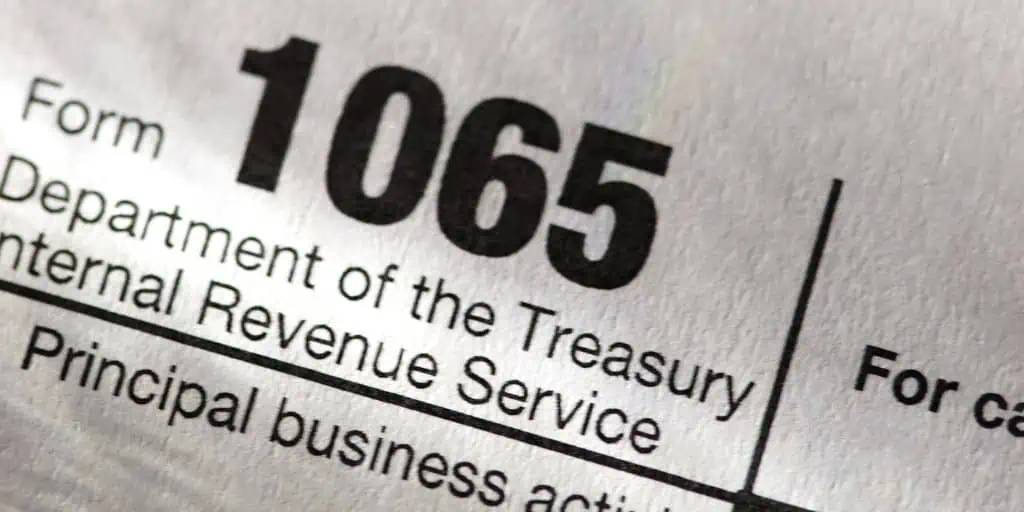What Is a Partnership?
REtipster does not provide legal advice. The information in this article can be impacted by many unique variables. Always consult with a qualified legal professional before taking action.
Shortcuts: Partnership
- Business partnerships refer to two or more people who share ownership of a company.
- There are three main types of business partnerships: general partnerships, limited partnerships, and limited liability partnerships.
- General partnerships expose all partners to unlimited personal liability for business debts and obligations, while limited partnerships allow some partners to invest without participating in daily operations or management.
- Partnership agreements define each partner’s role, profit distribution, and procedures for business exit.
- Partnerships pass through income and losses to partners’ personal tax returns without entity-level taxation.
Understanding a Partnership
A partnership or business partnership refers to shared ownership between two or more individuals who agree to operate a business for profit. In this arrangement, partners become co-owners of business assets, share decision-making authority, and accept joint responsibility for business obligations. Each partner can typically bind the partnership through their actions, creating both opportunity and risk for all involved parties.
A business partnership also creates a fiduciary duty among partners. Each partner must act in the partnership’s best interests and avoid conflicts that could harm other partners or the business. These duties create legal obligations that exceed simple contractual relationships.
One feature that sets partnerships apart from other business structures is how they are taxed; partnerships themselves pay no income taxes, instead passing profits and losses through to partners’ individual tax returns. This arrangement, called “pass-through taxation,” affects both business operations and personal financial planning for all partners.
The concept of business partnership has guided commerce for thousands of years, with evidence of partnership agreements found in ancient civilizations. Today, millions of American businesses operate as partnerships because this structure offers unique advantages that other business models cannot match.
Key Characteristics of Business Partnerships
Business partnership characteristics include several fundamental features that make partnerships different from other business structures.
Shared Ownership Structure
Unlike corporations with shareholders or limited liability companies (LLCs) with members, partnerships create direct ownership relationships where each partner owns a portion of business assets and operations.
Partnership ownership typically matches each partner’s contribution of money, property, or services to the business. However, partners can agree to ownership percentages that differ from their contributions, providing flexibility in structuring business relationships.
Joint Management Authority
Partnerships include shared management responsibilities among partners. Unless partnership agreements specify otherwise, all partners have equal rights to participate in business management and decision-making.
Management authority in partnerships means each partner can typically make decisions that bind the entire partnership. This power creates efficiency in daily operations but requires trust and communication among partners to prevent conflicts.
RELATED: The Freedom Clause: A Smart Move for Real Estate Partnerships
Profit and Loss Sharing
Partnerships include predetermined methods for sharing profits and losses among partners. While partners can agree to any profit distribution method, partnerships typically allocate profits and losses based on ownership percentages or contribution levels.
Partners also share tax consequences of business operations, including deductible losses that can offset other income sources. This sharing affects both business operations and partners’ personal financial situations.
Unlimited Liability Exposure
Partnerships include unlimited personal liability for general partners. This means partners’ personal assets can be pursued to satisfy partnership debts and obligations, creating significant risk that other business structures avoid through limited liability protections.
Joint and several liability in partnerships means creditors can pursue any partner for the full amount of partnership obligations, not just their proportionate share. This liability exposure makes partnership formation decisions critical for protecting personal wealth.
Types of Business Partnerships
Understanding types of business partnerships helps entrepreneurs choose the structure that best fits their needs, risk tolerance, and business goals.
General Partnership
In a general partnership or GP, all partners share equal responsibility for business operations, management decisions, and financial obligations. Each partner can act on behalf of the partnership. However, all partners face unlimited personal liability for business debts.
General partnerships work well for small businesses where partners trust each other and want equal participation in operations. Professional service firms like law offices, medical practices, and consulting companies often choose general partnerships.
General partnerships offer simplicity and equal participation but expose all partners to significant personal risk. Partners typically have equal voting rights and management authority unless their agreement specifies different arrangements.
Limited Partnership
Limited partnerships combine general partners who manage the business with limited partners who invest capital but avoid daily operations. This structure offers investment opportunities without management responsibilities or unlimited liability exposure.
Limited partnerships appeal to businesses seeking investment capital without giving up operational control. Real estate development projects, investment funds, and capital-intensive ventures often use limited partnerships to attract passive investors. In land investing, for example, many funders partner with land flippers (“operators”) who have otherwise limited capital.
While general partners maintain unlimited liability and full management control, limited partners risk only their investment amounts and cannot participate in business management without losing their liability protection.
Limited Liability Partnership (LLP)
Limited liability partnerships represent specialized partnership structures that protect partners from personal liability for other partners’ professional mistakes or negligence. While partners remain liable for their own actions and general business debts, they avoid responsibility for malpractice claims against other partners.
LLPs require state registration and ongoing compliance with regulatory requirements. Most states restrict LLP formation to licensed professionals such as attorneys, accountants, architects, and engineers, ensuring that only qualified professionals access this protective structure.
Professional service firms favor LLPs because they limit exposure to malpractice lawsuits while maintaining partnership tax benefits and management flexibility.
Advantages and Disadvantages of Partnerships
Evaluating the advantages of business partnerships against their disadvantages helps entrepreneurs make informed decisions when choosing what kind of business entity they want to set up.
Benefits of Partnerships
- Shared resources and expertise: Partners can combine different skills, knowledge, and resources to tackle larger projects and serve more customers than individual businesses could handle.
- Pass-through taxation: Partnerships avoid double taxation by passing profits and losses directly to partners’ individual tax returns.
- Flexible management structure: Partners can adapt their roles and responsibilities as businesses evolve, modifying partnership agreements without complex corporate formalities.
- Easier formation and operation: Partnerships avoid incorporation procedures, board meetings, shareholder resolutions, and complex reporting requirements.
Drawbacks of Partnerships
- Unlimited personal liability: Creditors can pursue personal assets, including homes, cars, and bank accounts, to satisfy partnership debts and legal obligations.
- Joint and several liability: Each partner is potentially responsible for entire partnership obligations, not just proportionate shares. Creditors can pursue the most financially capable partner for full debt amounts regardless of their actual responsibility level.
- Potential for partner disputes: This is a common problem when multiple people share decision-making authority. Disagreements about business direction, profit distribution, or operational responsibilities can disrupt business operations.
- Limited business life: Under the Uniform Partnership Act (UPA), the death, withdrawal, bankruptcy, or incapacity of any partner automatically dissolves the partnership—unless the partners choose to reform or continue as a new entity. However, under the Revised UPA guidelines, which most U.S. states follow, dissociation (a partner leaves) is different from dissolution (partnership ends). In this case, events like death, withdrawal, or incapacity cause dissociation but do not automatically dissolve the partnership if partners choose to continue under RUPA rules or their agreement.
Common Examples of Partnerships in Business
Here are some real examples of how partnerships works across different industries.
Professional Services
- Law firms: Partners specialize in different areas (like personal injury vs. tax law) so they can handle complex cases that require multiple types of legal expertise under one roof.
- Medical practices: Doctors share expensive equipment and office costs while keeping their own patients, giving everyone access to better resources at a lower individual cost.
- Accounting firms: Partners focus on different specialties (like restaurant accounting vs. construction) to serve a wider range of business clients than any single accountant could handle.
Real Estate
- Real estate development and investing: Partners combine different resources (land ownership, money, construction expertise) that are too expensive or complex for any single person to handle alone. Annie and Julie of GoodEgg Investments share their thoughts on how to make a real estate investing partnership work in episode 71 of the REtipster Podcast.
- Investment groups: Money partners provide funding while management partners handle tenants and property maintenance, letting each focus on their strengths while sharing profits. One example of this is Chris Duff and his friends, which we featured in episode 187 of the REtipster Podcast. You can find the full video of the conversation below.
Small Business Teams
- Restaurants: Chefs partner with business managers because great cooking skills rarely come with expertise in finances, marketing, and employee management.
- Tech startups: Developers partner with marketers because building software and selling software require completely different skill sets that most people don’t have together.
- Retail businesses: Product creators partner with sales experts because making great items and convincing customers to buy them are two very different talents.
Business Partnership vs. Other Models
Choosing the right business structure affects liability, taxes, and operations. Here are the key differences between partnerships, LLCs, and joint ventures.
Here’s a handy table comparing the three business models:
| Feature | Partnership | LLC | Joint Venture |
| Liability Protection | General partners have unlimited personal liability | All members have limited liability protection | Liability typically limited to specific project |
| Tax Treatment | Must use pass-through taxation | Can choose pass-through or corporate taxation | May be taxed as partnership or on individual returns |
| Management Structure | All general partners have equal rights unless agreement specifies otherwise | Can separate ownership from management with manager-managed option | Managed according to contract terms |
| Formation Requirements | Can form through agreement or conduct | Must file articles of organization with state | Usually formed through contract between existing businesses |
| Duration | Ongoing business for indefinite period | Ongoing business for indefinite period | Specific project or limited time period |
| Legal Entity | Creates separate business entity | Creates separate business entity | Usually no new entity created |
| Best For | Ongoing shared business with trusted partners | Business needing liability protection and tax flexibility | Specific projects between existing businesses |
If you’re starting your land business, you can either start with a partnership or an LLC. The latter might sound a little daunting, but forming an LLC is easier than you think. Here’s how.
When to Choose a Partnership
Partnerships can be a great way to start or grow a business, but they’re not right for everyone. Here’s how to decide if a partnership makes sense for your situation.
- You have different skills. A partnership works well when you’re good at something your partner isn’t, and vice versa. For example, you might be great at marketing while they excel at operations.
- You need to share costs. Starting a business can be expensive. If you can’t afford the startup costs alone but can manage them together, a partnership makes sense.
- You’re a licensed professional. Lawyers, doctors, and consultants often form partnerships to share resources and expertise while serving clients better.
- You have different connections. If you each know different customers, suppliers, or industry contacts, you can grow the business faster together than apart.
Important Questions to Consider
Before entering into a business partnership, ask yourself these questions:
- Are you comfortable with risk? In a partnership, you’re personally responsible for business debts, even ones your partner creates. Make sure you’re okay with this level of risk.
- Do you trust your partner? Your partner’s decisions affect you directly. You need complete trust in their judgment and character.
- Can you work together? Partnerships require constant communication and compromise. If you clash over decisions or can’t resolve disagreements, a partnership won’t work.
- Do you want the same things? Partners should have similar goals for the business. If one wants to grow rapidly while the other prefers staying small, conflicts will arise.
- Can you both deliver? Make sure both partners can contribute what they promise, whether that’s money, time, skills, or connections.
Frequently Asked Questions: Partnership
What is limited liability partnership and how does it differ from general partnerships?
An LLP protects partners from being personally responsible for other partners’ mistakes or bad decisions. You’re only liable for your own actions and the business’s general debts.
This is different from a general partnership, where all partners are personally liable for everything the business does. In an LLP, you’re protected from your partner’s professional errors while still maintaining the tax benefits and management flexibility of a partnership.
However, most states restrict LLPs to licensed professionals like lawyers, accountants, and engineers. You’ll also need to register with the state and follow ongoing compliance requirements.
How does profit sharing work in a partnership and how can partners receive different amounts?
Partners split profits based on what’s written in their partnership agreement. This is usually tied to ownership percentages or how much each person contributed, but partners can agree to any split they want.
When it comes to taxes, you’ll pay on your share of profits even if you don’t actually receive cash that year. Your share shows up on your personal tax return via a Schedule K-1 form that the partnership sends you.
Partnership agreements offer flexibility in how profits are distributed. Some partners might receive guaranteed payments for their work, while others might get preferred returns on their investment before the remaining profits are split according to ownership percentages.
Are partnerships taxed and what are the tax implications for partners?
The partnership itself pays no income tax but must file an information return called Form 1065 with the IRS each year. Instead, the tax burden passes through to the individual partners. Each partner also receives a K-1 form that shows their share of profits, losses, and deductions, which they then report on their personal tax returns.
Meanwhile, general partners typically pay self-employment tax on their partnership income, though limited partners may avoid this tax on their investment returns if they are truly only passive investors.
Remember: you’ll pay taxes on your allocated share of profits even if the partnership doesn’t distribute any cash to you that year. This means you could owe taxes on money you haven’t actually received.
References
- Internal Revenue Service, “Publication 541 (12/2024), Partnerships.” https://www.irs.gov/publications/p541
- Big Ideas for Small Business, “What IRS Statistics Tell Us About Partnerships and LLCs.” https://bigideasforsmallbusiness.com/what-irs-statistics-tell-us-about-partnerships-and-llcs/
- Plutus Education, “Distribution of Profit Among Partners: Journal Entry, Rules & More.” https://plutuseducation.com/blog/distribution-of-profit-among-partners/
- Trembly Law Firm, “Liability in a Partnership: Joint and Several Liability.” https://tremblylaw.com/blog/liability-in-a-partnership-joint-and-several-liability/
- Investopedia, “General Partnerships: Definition, Features, and Example.” https://www.investopedia.com/terms/g/generalpartnership.asp
- Reynolds Porter Chamberlain LLP, “PE funds: Risks to LP limited liability status.” https://www.rpclegal.com/thinking/professional-and-financial-risks/to-what-extent-may-limited-partners-or-a-limited-partners-advisory-committee/
- The Legal Environment and Foundations of Business Law (v. 1.0), “Partnership Operation and Termination.” https://2012books.lardbucket.org/books/the-legal-environment-and-foundations-of-business-law/s24-partnership-operation-and-term.html
- Internal Revenue Service, “Entities 1.” https://www.irs.gov/faqs/small-business-self-employed-other-business/entities/entities-1
- Internal Revenue Service, “Tax information for partnerships.” https://www.irs.gov/businesses/partnerships
- Internal Revenue Service, “Partner’s Instructions for Schedule K-1 (Form 1065) (2024).” https://www.irs.gov/instructions/i1065sk1
- The Tax Adviser, “Self-employment tax and LLCs.” https://www.thetaxadviser.com/issues/2022/oct/self-employment-tax-llcs/








